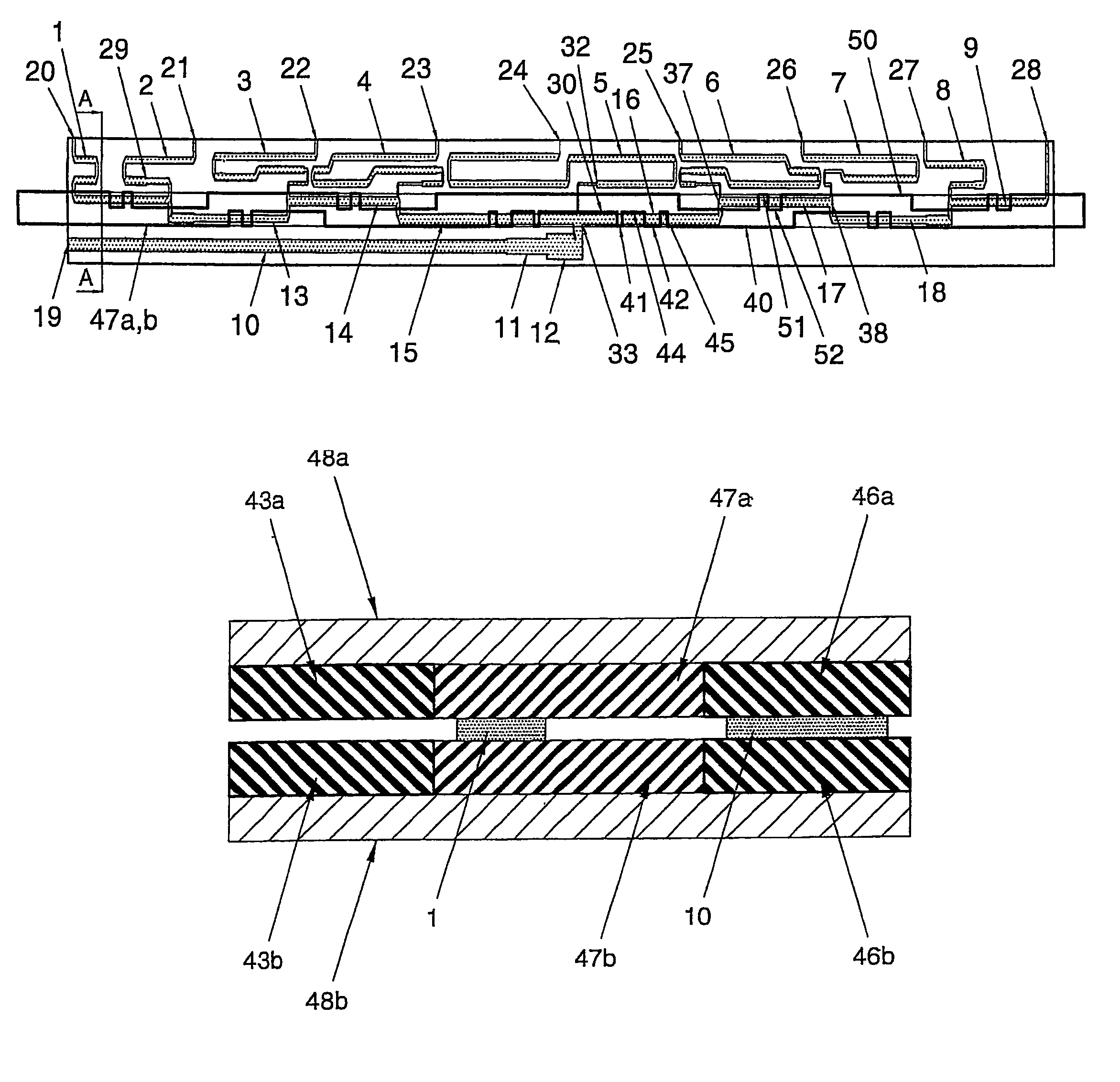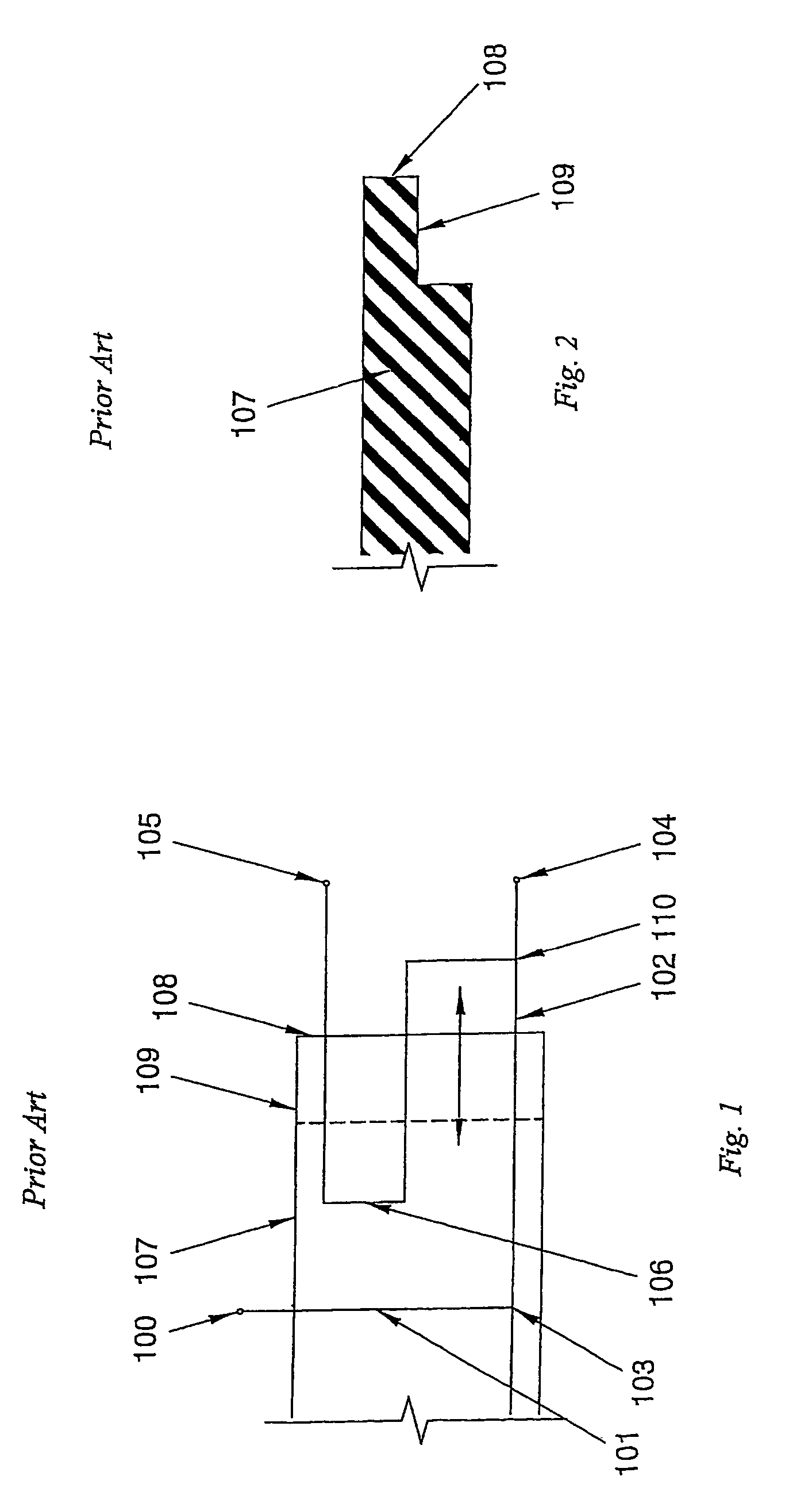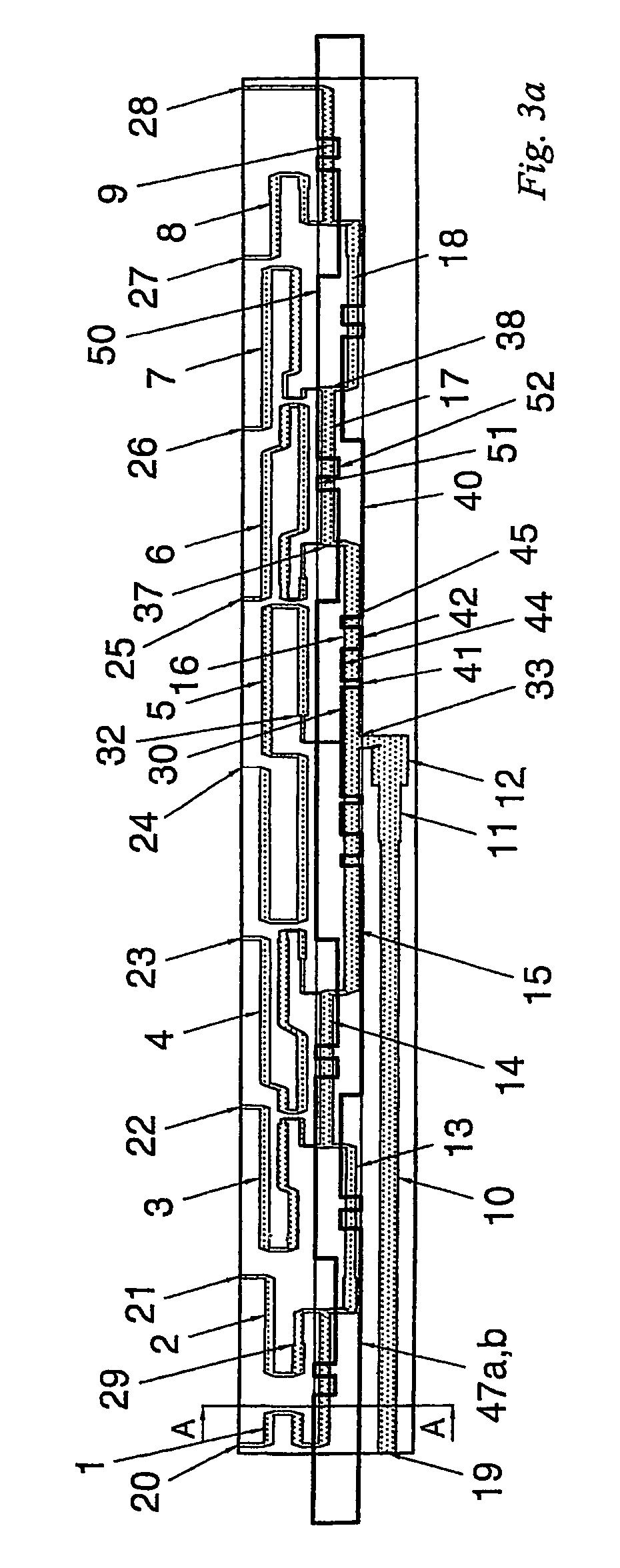Adjustable antenna feed network with integrated phase shifter
- Summary
- Abstract
- Description
- Claims
- Application Information
AI Technical Summary
Benefits of technology
Problems solved by technology
Method used
Image
Examples
Embodiment Construction
[0064]In this written description, the use of the disjunctive is intended to include the conjunctive. The use of definite or indefinite articles is not intended to indicate cardinality. In particular, a reference to “the” object or thing or “an” object or “a” thing is intended to also describe a plurality of such objects or things.
[0065]The preferred arrangements described below provide a tuneable multi-channel phase shifter integrated with a beam-forming network for a linear antenna array. In order to control the beam direction and beam shape of this antenna array we need to provide certain phase relations between the radiating elements. For subsequent control and changing the beam direction these phase relations should be varied in a specific manner. The beam-forming network also includes circuit-matching elements to minimise signal reflection and maximise the emitted fields.
[0066]A 10-port feedline network with integrated phase shifter for a phased array antenna is shown in FIGS....
PUM
 Login to View More
Login to View More Abstract
Description
Claims
Application Information
 Login to View More
Login to View More - R&D
- Intellectual Property
- Life Sciences
- Materials
- Tech Scout
- Unparalleled Data Quality
- Higher Quality Content
- 60% Fewer Hallucinations
Browse by: Latest US Patents, China's latest patents, Technical Efficacy Thesaurus, Application Domain, Technology Topic, Popular Technical Reports.
© 2025 PatSnap. All rights reserved.Legal|Privacy policy|Modern Slavery Act Transparency Statement|Sitemap|About US| Contact US: help@patsnap.com



